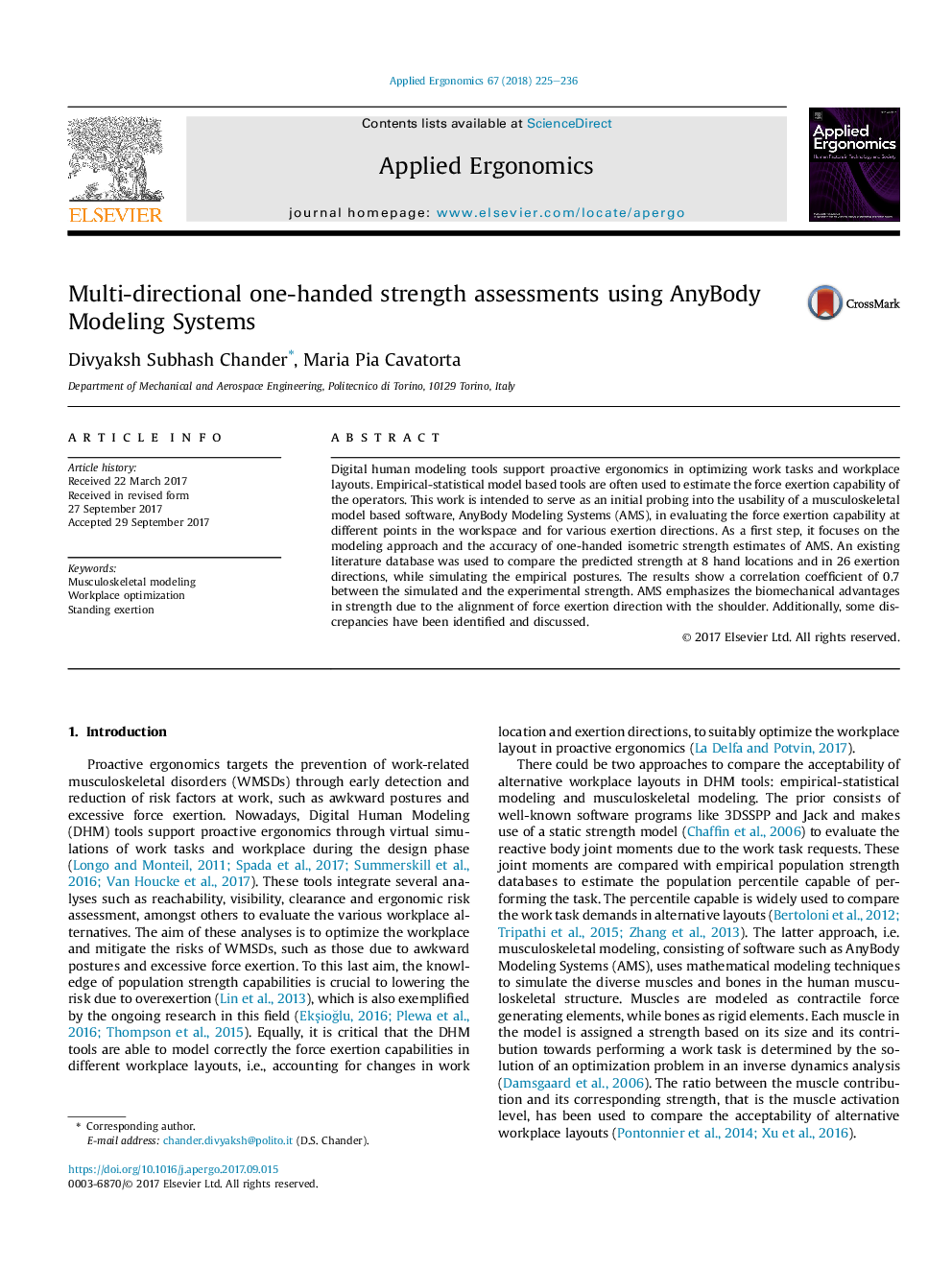| Article ID | Journal | Published Year | Pages | File Type |
|---|---|---|---|---|
| 6947717 | Applied Ergonomics | 2018 | 12 Pages |
Abstract
Digital human modeling tools support proactive ergonomics in optimizing work tasks and workplace layouts. Empirical-statistical model based tools are often used to estimate the force exertion capability of the operators. This work is intended to serve as an initial probing into the usability of a musculoskeletal model based software, AnyBody Modeling Systems (AMS), in evaluating the force exertion capability at different points in the workspace and for various exertion directions. As a first step, it focuses on the modeling approach and the accuracy of one-handed isometric strength estimates of AMS. An existing literature database was used to compare the predicted strength at 8 hand locations and in 26 exertion directions, while simulating the empirical postures. The results show a correlation coefficient of 0.7 between the simulated and the experimental strength. AMS emphasizes the biomechanical advantages in strength due to the alignment of force exertion direction with the shoulder. Additionally, some discrepancies have been identified and discussed.
Keywords
Related Topics
Physical Sciences and Engineering
Computer Science
Human-Computer Interaction
Authors
Divyaksh Subhash Chander, Maria Pia Cavatorta,
